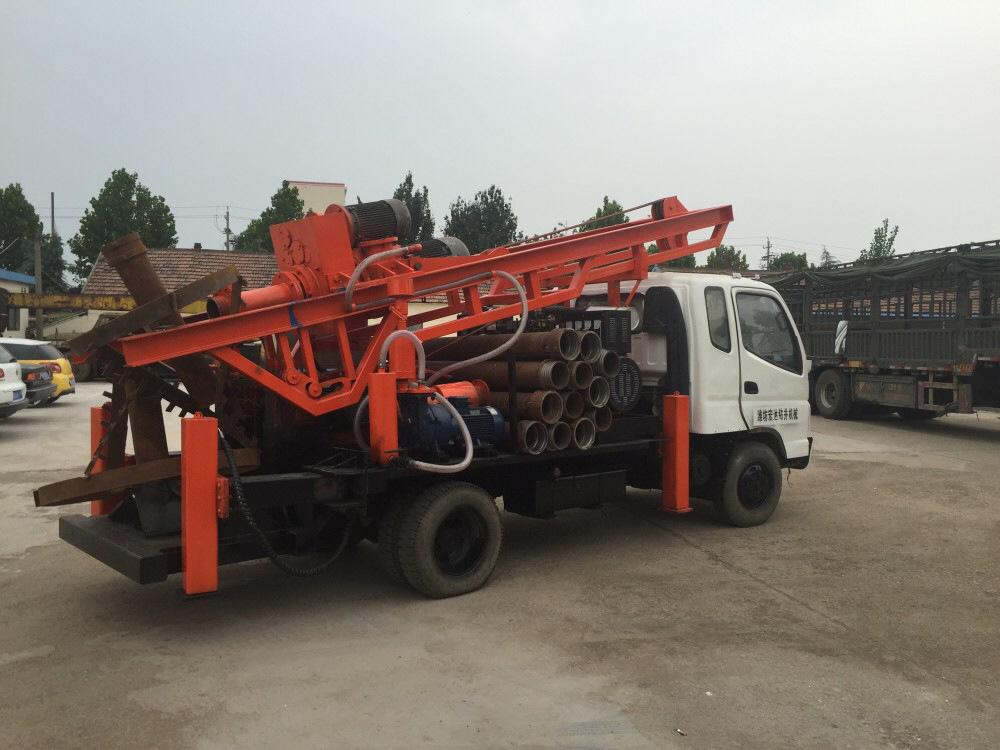The composition and working principle of drilling rig equipment
Related products Link:
The composition of drilling rig equipment
1. Lifting system
Composition: derrick, winch, traveling system, wire rope, crane, traveling block, hook;
Function: Trigger and run the drilling tool, run the casing, control the drill bit and the drilling tool.
2. Rotation system
Composition: turntable, kelly, drill string tap, top drive system, down the hole power drilling tools, etc.
Function: Drive drilling tools, drill bits, etc. to rotate and break rocks, load and unload drilling tool threads, and perform special operations (connect the lifting and mud circulation systems).
3. Circulatory system
Composition: vibrating screen, desander, desilter
Function: circulating mud
4. Power system
Composition: motor and diesel engine, etc.
Function: Drive winches, turntables, drilling pumps and other working machines to run.
5. Transmission system
Composition: reducer, clutch, shaft, chain, etc.
Function: The main task of the transmission system is to transmit and distribute the energy of the engine to each working machine. Due to the gap between the characteristics of the engine and the characteristics required by the working machine, the transmission system b is required to include mechanisms such as deceleration, paralleling, reversing, and shifting. Sometimes on the basis of mechanical transmission, there are also hydraulic transmission or electric transmission.
6. Control system
Composition: computer, sensor, signal transmission medium, control actuator, etc.
Function: Manipulate various systems to coordinate work. According to the requirements of the drilling process, each working machine has a quick response, accurate and reliable movements, and is convenient for centralized control and automatic recording. It enables the operator to ensure the safety or normal operation of each part of the drilling rig according to his own wishes.
7. Pedestal
Composition: The base of the drilling rig is mainly composed of the base of the drilling floor, the base of the pump and the double main auxiliary equipment, etc., which are generally welded by steel pipes.
Function: It is convenient to install various equipment for fixing the drilling rig, and meet the requirements of relocation or whole towing construction.
8. Auxiliary equipment
Modern drilling rigs must also have a set of auxiliary equipment, such as power supply, gas supply, water supply, oil supply and other equipment, equipment storage, blowout and fire prevention facilities, drilling fluid preparation, storage, processing facilities, etc., as well as various instruments and automatic recording instruments. . Drilling in remote areas also requires living and rest facilities for staff, and communication equipment such as telephones, radios, and walkie-talkies for communication. Drilling in cold areas should also have heating and thermal insulation equipment.
working principle
The hoisting ring and the hoisting ring seat are connected with a pin shaft, the hoisting ring seat and the hook rod are welded into one body, the cylinder body and the hook body are connected by left-handed threads, and a stopper is used to prevent the threads from loosening. The hook body and the cylinder body can move up and down along the hook rod. The function of the inner and outer load springs is to make the vertical root unbuckle and bounce upwards when drilling.
The cylinder is filled with oil. The seat ring of the thrust bearing divides the oil cavity into two parts, and there are oil holes on the seat ring. Due to the damping effect of the oil flow, the shock and vibration of the hook body during the drilling operation can be absorbed, which can prevent the thread damage of the drill pipe joint.
The upper end of the cylinder is composed of 6 small springs and a positioning plate to form a positioning device. With the help of the friction between the positioning and the annular contact surface of the lifting ring seat, the lifting ring can be prevented from rotating when the empty elevator is lifted.





